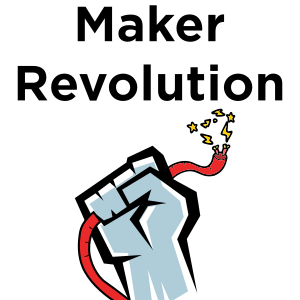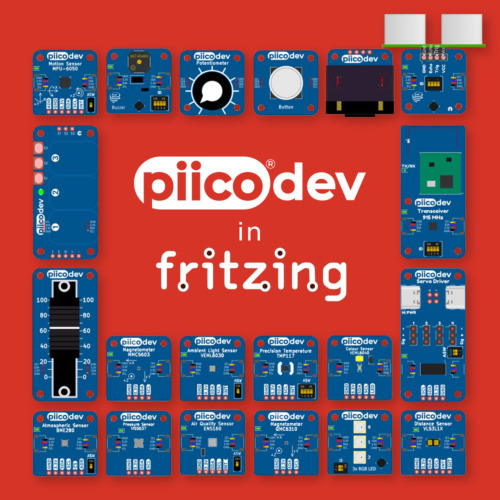This product is no longer available. This page is only for reference.
The MyoWare® 2.0 Muscle Sensor Development Kit is an Arduino-compatible, all-in-one electromyography (EMG) sensor kit that provides you with all the boards from the MyoWare 2.0 ecosystem to test out different configurations for your application. Depending on your configuration, you can visualize the muscles in action with the MyoWare 2.0 LED Shield or read the analog output using an Arduino-compatible microcontroller! Simply snap on a MyoWare 2.0 Shield, add some EMG sensor pads, attach the sensor to a muscle group, and flex!
The kit also includes a mini screwdriver to easily remove shields, USB A to C cable to recharge the 40mAh LiPo batteries or connecting your microcontroller to a computer, MyoWare 2.0 Reference Cable to connect to large muscle groups, sensor cable to connect to muscle groups away from the sensor, 3.5mm TRS-to-TRS cable to easily connect the MyoWare 2.0 ecosystem to an Arduino-compatible development board using an Uno R3 footprint, and RedBoard Plus.
The MyoWare 2.0 Muscle Sensor included in this kit has been redesigned from the ground up with a new easy-to-use, compact design and upgraded with the latest and greatest chipset improving sensor performance and reliability. The sensor measures muscle activity through the electric potential of the muscle, commonly referred to as surface electromyography (EMG or sEMG for short). When your brain tells your muscle to flex, it sends an electrical signal to your muscle to start recruiting motor units (the bundles of muscle fibers that generate the force behind your muscles).
The harder you flex, the more motor units are recruited to generate greater muscle force. The greater the number of motor units, the more the electrical activity of your muscle increases. MyoWare 2.0 Muscle Sensor will analyze the filtered and rectified electrical activity of a muscle and output a signal (0-VIN volts, where VIN signifies the voltage of the power source) that represents how hard the muscle is being flexed. The innovative connector system eliminates the need to solder connections for the MyoWare 2.0 ecosystem whether you are visualizing the muscles in action with the MyoWare 2.0 LED Shield or reading the analog output with an Arduino-compatible development board.
This kit is constructed to follow the standalone examples using the MyoWare 2.0 Power Shield and LED Shield; and read the output voltage from a single muscle sensor using an Arduino-compatible microcontroller featured in the MyoWare 2.0 Muscle Sensor Guide. For a basic setup without a microcontroller, check out the MyoWare 2.0 Muscle Sensor Basic Kit. The basic kit includes the bare minimum from the MyoWare 2.0 ecosystem to visualize your muscles in action without programming.
Boards in the MyoWare 2.0 ecosystem are not intended for use in the diagnosis of disease or other conditions, or in the cure, mitigation treatment, or prevention of disease, in a man or other animals.
The MyoWare 2.0 ecosystem consists of shields that easily interface with the MyoWare® 2.0 Muscle Sensor, which is a low-cost, Arduino-compatible, all-in-one electromyography (EMG) sensor from Advancer Technologies. The innovative connector system allows users to easily snap shields together with a compact low profile and connect to a microcontroller's analog input to measure raw, filtered, and rectified electrical activity of a target muscle. This eliminates the need to solder connections between boards.
This product is a collaboration with Brian Kaminski from Advancer Technologies. A portion of each sales goes back to them for product support and continued development.
Get Started with the MyoWare 2.0 Muscle Sensor Guide
Documents
- Board Dimensions
- Hookup Guide
- Advancer Technologies: MyoWare® 2.0
- Quickstart Guide (4.37MB)
- Advanced Guide (9.00MB)
- Patents [1]
- MCP73831 Datasheet
- Polymer Lithium Ion Battery (40mAh)
- Arduino Reference Language: ArduinoBLE Library
- GitHub Example Repo
- MyoWare 2.0 Ecosystem Page
[1] Note: This product is patent protected. To prevent counterfeit boards, the Eagle design files and GitHub hardware repository are not shared for boards in the MyoWare 2.0 ecosystem.
Exact shipping can be calculated on the view cart page (no login required).
Products that weigh more than 0.5 KG may cost more than what's shown (for example, test equipment, machines, >500mL liquids, etc).
We deliver Australia-wide with these options (depends on the final destination - you can get a quote on the view cart page):
- $3+ for Stamped Mail (typically 10+ business days, not tracked, only available on selected small items)
- $7+ for Standard Post (typically 6+ business days, tracked)
- $11+ for Express Post (typically 2+ business days, tracked)
- Pickup - Free! Only available to customers who live in the Newcastle region (must order online and only pickup after we email to notify you the order is ready). Orders placed after 2PM may not be ready until the following business day.
Non-metro addresses in WA, NT, SA & TAS can take 2+ days in addition to the above information.
Some batteries (such as LiPo) can't be shipped by Air. During checkout, Express Post and International Methods will not be an option if you have that type of battery in your shopping cart.
International Orders - the following rates are for New Zealand and will vary for other countries:
- $12+ for Pack and Track (3+ days, tracked)
- $16+ for Express International (2-5 days, tracked)
If you order lots of gear, the postage amount will increase based on the weight of your order.
Our physical address (here's a PDF which includes other key business details):
40 Aruma Place
Cardiff
NSW, 2285
Australia
Take a look at our customer service page if you have other questions such as "do we do purchase orders" (yes!) or "are prices GST inclusive" (yes they are!). We're here to help - get in touch with us to talk shop.
Have a product question? We're here to help!
Guides
The Maker Revolution
Projects
PiicoDev Ecosystem In Fritzing
10" Home Lab Testing Rack
WLED Hourglass Theatre Prop - DMX Over Wi-Fi!
Makers love reviews as much as you do, please follow this link to review the products you have purchased.










Product Comments